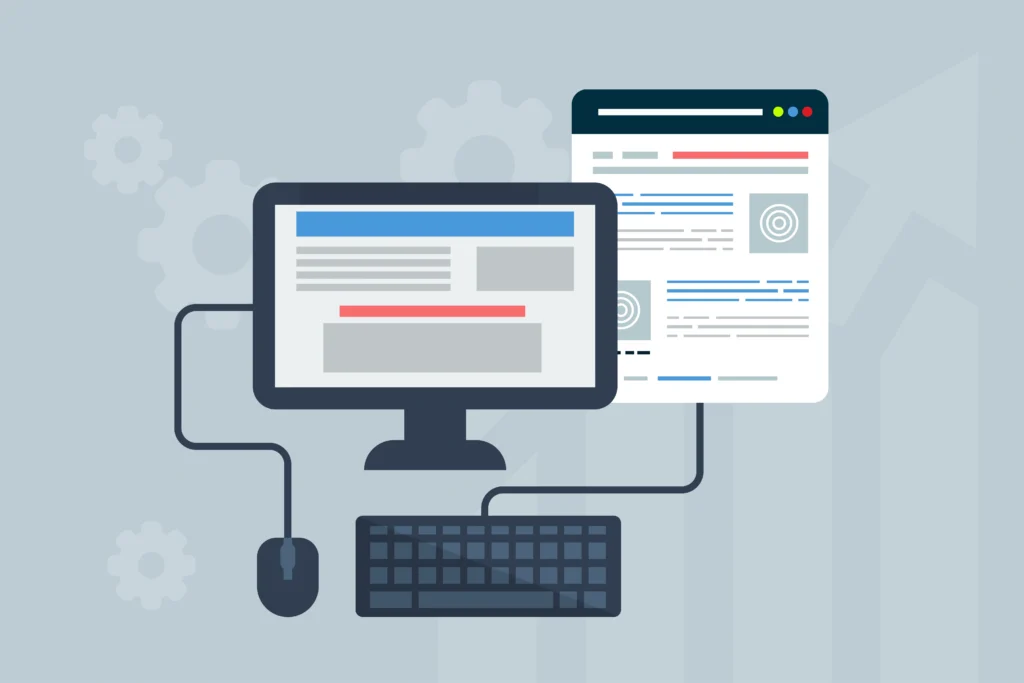Know Your Competitor Before Starting Digital Marketing
At a glance:
- Knowing your direct, indirect, and related competitors helps focus your analysis effectively.
- Learn from your competitors’ strengths and weaknesses to refine your own marketing strategy.
- Tools like Ahrefs, SEMRush, and Sprout Social can streamline the data-gathering process.
In the ever-evolving digital world, launching a successful marketing strategy requires more than just creativity and effort. To truly thrive, businesses must first understand their competition. Knowing your competitors is a critical first step before diving into any digital marketing campaign, as it allows you to uncover key insights, anticipate challenges, and identify opportunities that can help you outperform your rivals. In this article, we’ll explore the importance of competitive analysis, key components to focus on, and how digital tools can streamline the process for greater success.
Why Competitor Analysis is Essential Before Launching a Digital Marketing Strategy
Before initiating any digital marketing effort, performing a competitor analysis is vital for laying the groundwork for success. It’s essential because it helps businesses assess their place in the market, understand industry standards, and uncover gaps that competitors may have missed. By gaining insight into how your competitors attract and retain customers, you can tailor your own strategies to stand out and outperform them.
Digital marketing opens a window to your competitors’ online presence, providing you with a wealth of information that would be difficult to gather using traditional methods. Through digital channels like social media, search engine optimisation (SEO), and pay-per-click (PPC) campaigns, businesses can obtain competitive insights and opportunities, allowing them to adjust their approach and seize untapped market share.
What is a Competitive Analysis in Digital Marketing?
A competitive analysis in digital marketing is the process of researching and evaluating your competitors’ online strategies to understand their strengths and weaknesses. It involves assessing factors such as their SEO, social media presence, paid advertising tactics, and website performance. This analysis allows businesses to benchmark their efforts and uncover strategies that could enhance their marketing success.
By performing this analysis, companies can identify key areas where competitors excel and where they fall short.
Why Conduct Competitive Analysis?
Competitive analysis is crucial for revealing market gaps and discovering new opportunities. By understanding what your competitors are doing well and where they struggle, you can identify areas of improvement and innovation. For example, if you notice that a competitor has strong SEO but lacks a robust social media presence, there may be an opportunity for you to dominate that space.
Moreover, this process allows you to tailor your digital marketing efforts.
This is where we can help; by analysing the tactics that work for your competitors, Anxious to Matter can optimise your campaigns, focusing on what will resonate best with your target audience. Why wait? Contact us and stay ahead of the competition.
Types of Competitors to Analyse
Understanding your competition is about more than simply tracking your direct rivals. Competitors come in various forms, and it’s important to categorise them effectively.
- Primary Competitors: These are your direct market rivals offering similar products or services to the same audience. Understanding their strategies helps you refine your own to attract shared customers.
- Secondary Competitors: These competitors provide a similar product but may target a different demographic or market segment. For example, a high-end brand may consider a budget brand a secondary competitor if they both sell similar products.
- Tertiary Competitors: These brands may not directly compete with your product or service but are influential in the same space. For instance, a health-conscious food company may consider fitness brands as tertiary competitors because of overlapping customer interests.
Key Components of Competitive Analysis
When conducting a competitive analysis, it’s crucial to evaluate four main components: Product, Price, Promotion, and Place.
- Product: What do your competitors offer, and how is it perceived in the market? Understanding their product’s unique selling points and features will help you identify areas where your offerings can stand out.
- Price: How do your competitors price their products or services? Understanding their pricing models helps you determine if your pricing is competitive or needs adjustment.
- Promotion: What marketing channels do they use to promote their products? By analysing how your competitors communicate with their audience, you can refine your own promotional tactics.
- Place: Where do they sell their products? Whether through eCommerce, brick-and-mortar stores, or both, knowing where your competitors are present can inform your distribution strategies.
Understanding how each of these elements contributes to your competitors’ success is key to creating a strategy that sets you apart in the marketplace.
Tools for Digital Competitive Analysis
A number of powerful tools are available to help businesses conduct an effective competitive analysis. These tools simplify data collection and offer insights into competitors’ SEO, PPC, and social media strategies.
- SEMrush: This tool allows users to perform in-depth SEO audits, track keyword rankings, and assess competitors’ advertising efforts.
- Ahrefs: Known for its extensive backlink data, Ahrefs helps analyse competitors’ SEO performance, identify top-ranking keywords, and discover content opportunities.
- SpyFu: Ideal for PPC analysis, SpyFu reveals the most profitable keywords used by competitors in their paid campaigns.
- AI Tools: AI-driven platforms such as Brandwatch and Sprout Social monitor competitors’ online presence, social media engagement, and brand sentiment to identify opportunities for growth.
Analysing Competitors’ Digital Channels
Understanding your competitors’ digital performance across platforms like social media, SEO, and PPC campaigns is crucial to staying ahead. By reviewing how competitors engage with their audience and attract traffic, you can gain insights into their strengths and weaknesses.
- Social Media: What platforms are your competitors using, and how often do they post? Observing their social media engagement can help you refine your own strategy and better connect with your audience.
- SEO: Analysing your competitors’ SEO performance, such as keyword rankings and backlink profiles, gives you insights into how to improve your search visibility.
- PPC: Review the types of paid ads your competitors are running and the keywords they are bidding on. This will help you optimise your own PPC campaigns and allocate your budget effectively.
Best Practices and Market Trends
Through competitive analysis, you can adopt the most successful strategies that your leading competitors use. Whether it’s their content marketing, influencer partnerships, or social media campaigns, understanding what works for others in your industry can help you develop a winning strategy.
Additionally, competitive analysis helps you stay on top of market trends. Let us help; Anxious to Matter can help recognise shifts in customer preferences, new technologies, or emerging digital platforms. Keeping you proactive in refining your tactics and staying ahead of the competition.
Before launching a digital marketing campaign, conducting a thorough competitor analysis is critical for success. By understanding the competitive landscape, identifying opportunities, and leveraging digital tools, you can craft a marketing strategy that not only meets your goals but exceeds the expectations of your target audience.
If you need assistance with further optimising your marketing efforts or have questions about specific tools, particularly image optimisation, feel free to contact Anxious to Matter for expert advice tailored to your needs.
Enquire Today
Melbourne Head Office
Suite 38 Level 7/570 St Kilda Rd, Melbourne VIC 3004, Australia
Phone: 1300 780 471
Email: [email protected]








